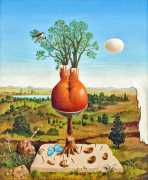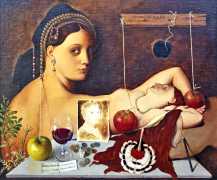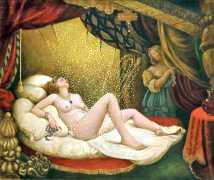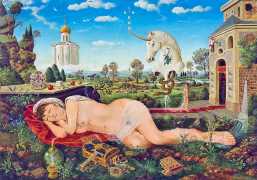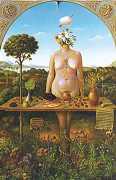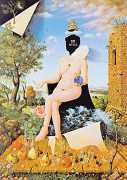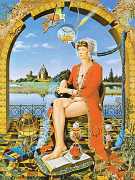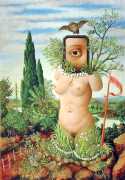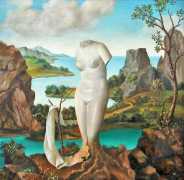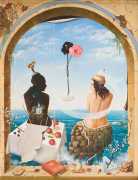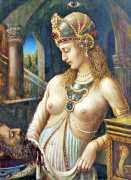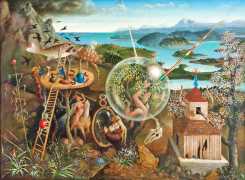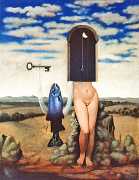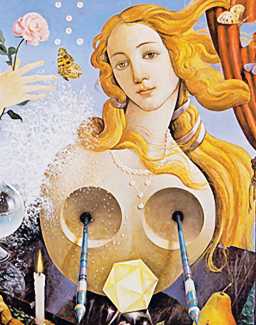 Octávio Araújo started painting his trademark ‘mystery’ canvases during his time in Moscow. As he explained in a 1972 interview with Eduardo Alves da Costa, ‘I’ve always been interested in the human figure and its natural and symbolic connections. I know I have been considered an expressionist, a surrealist, a fantastic realist, but I don’t know. I always feel more comfortable when I talk about myself in relation to art in general.’
Octávio Araújo started painting his trademark ‘mystery’ canvases during his time in Moscow. As he explained in a 1972 interview with Eduardo Alves da Costa, ‘I’ve always been interested in the human figure and its natural and symbolic connections. I know I have been considered an expressionist, a surrealist, a fantastic realist, but I don’t know. I always feel more comfortable when I talk about myself in relation to art in general.’
When asked about the predominance of naked women in his work, he replied ‘The female figure appears so often in my work for several reasons. The main one is that in prehistory women were stripped of their human condition. Women once represented an elemental force of nature, in all its purity and vigour. In my work the female figures place women squarely in their old, powerful places. Their loss of power and significance is why sometimes the figure appears fragmented and distorted. As for the objects that surround her, they have a magical meaning that has been lost. In the forgotten past human beings used magic to transform themselves, to perfect themselves. I try to awaken this original atmosphere of mystery and magic in my works, hence the drowned man, the ruins, the fragmented woman, the ladder, the pearl, the bird, the lightning, the dark cloud.’



